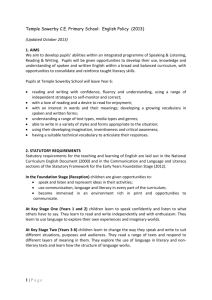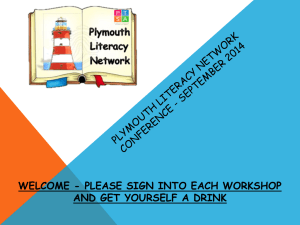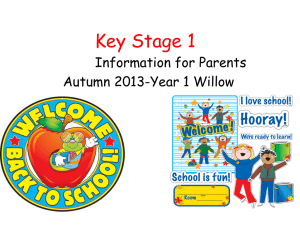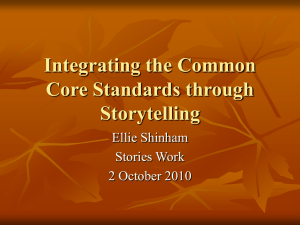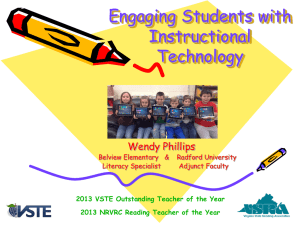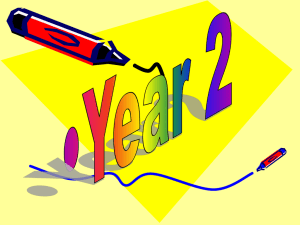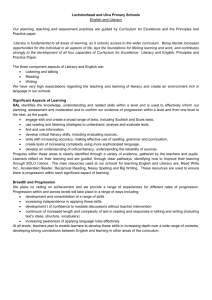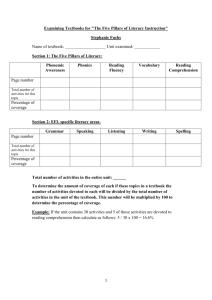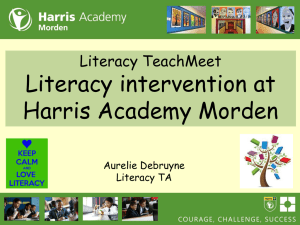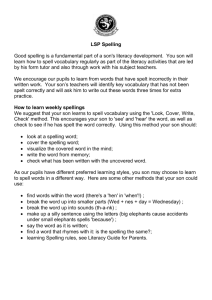Literacy Curriculum Statement 2015
advertisement
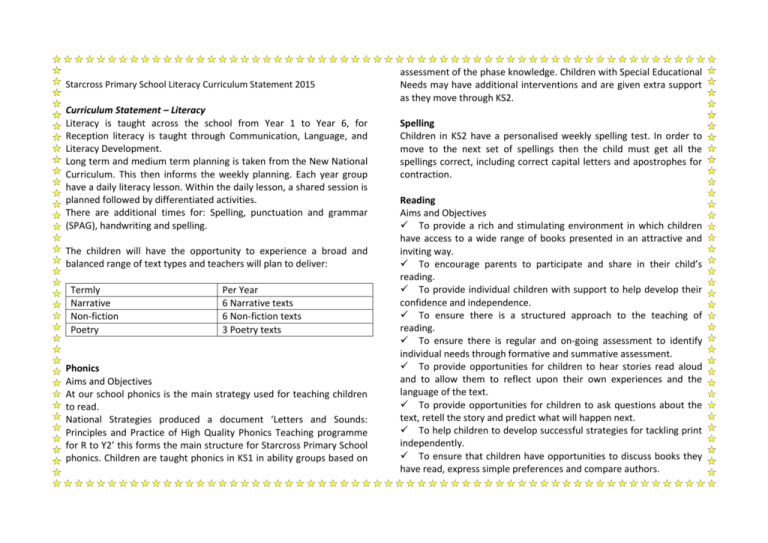
Starcross Primary School Literacy Curriculum Statement 2015 Curriculum Statement – Literacy Literacy is taught across the school from Year 1 to Year 6, for Reception literacy is taught through Communication, Language, and Literacy Development. Long term and medium term planning is taken from the New National Curriculum. This then informs the weekly planning. Each year group have a daily literacy lesson. Within the daily lesson, a shared session is planned followed by differentiated activities. There are additional times for: Spelling, punctuation and grammar (SPAG), handwriting and spelling. The children will have the opportunity to experience a broad and balanced range of text types and teachers will plan to deliver: Termly Narrative Non-fiction Poetry Per Year 6 Narrative texts 6 Non-fiction texts 3 Poetry texts Phonics Aims and Objectives At our school phonics is the main strategy used for teaching children to read. National Strategies produced a document ‘Letters and Sounds: Principles and Practice of High Quality Phonics Teaching programme for R to Y2’ this forms the main structure for Starcross Primary School phonics. Children are taught phonics in KS1 in ability groups based on assessment of the phase knowledge. Children with Special Educational Needs may have additional interventions and are given extra support as they move through KS2. Spelling Children in KS2 have a personalised weekly spelling test. In order to move to the next set of spellings then the child must get all the spellings correct, including correct capital letters and apostrophes for contraction. Reading Aims and Objectives To provide a rich and stimulating environment in which children have access to a wide range of books presented in an attractive and inviting way. To encourage parents to participate and share in their child’s reading. To provide individual children with support to help develop their confidence and independence. To ensure there is a structured approach to the teaching of reading. To ensure there is regular and on-going assessment to identify individual needs through formative and summative assessment. To provide opportunities for children to hear stories read aloud and to allow them to reflect upon their own experiences and the language of the text. To provide opportunities for children to ask questions about the text, retell the story and predict what will happen next. To help children to develop successful strategies for tackling print independently. To ensure that children have opportunities to discuss books they have read, express simple preferences and compare authors. To provide opportunities for children to read their own and other children’s texts aloud to the class. To ensure that children have opportunities to read silently and to reflect critical upon their reading. To provide opportunities for children to find information in books and data bases and are able to pursue an independent line of enquiry, sometimes drawing upon more than one line of enquiry. Writing Aims and Objectives We believe that a successful writing classroom should include: Clear expectations, targets and regular observation and assessment of progress towards the targets. A stimulating writing environment with displayed and celebrated examples of children’s own writing for visual literacy prompts. Opportunities for cross curricular writing and for publishing writing produced for a real purpose. All adults (not just teachers) as role models who use writing explicitly in the classroom for a variety of purposes and demonstrate on a regular basis what they are doing. A wide experience of reading as the primary source of knowledge about how written language looks and sounds. The systematic, regular and direct teaching of phonics, spelling and grammar. Rich oral experience of Speaking and Listening opportunities and Drama as a preparation for writing. Regular Shared Writing sessions with the teacher modelling in order to teach and refine the skills of text composition. Opportunities for supported and independent writing linked to and developed from Shared Writing. It is our aim therefore, to provide these important factors within our classrooms in order to provide a supportive and stimulating writing environment. Speaking & Listening Aims and Objectives We believe that a successful speaking and listening should include: The ability to speak and listen is fundamental to pupils’ language and social development. It is an essential tool for all areas of the curriculum, as talk underpins learning and thinking. It is vital that its significance is recognised by pupils, parents and teachers. Pupils need to be provided with many and varied contexts for talk, but they also need direct teaching in the skills of speaking and listening. We aim for children to be able to speak clearly, and as they get older, to develop and sustain ideas in talk. In listening, we aim for children to become attentive listeners, developing their analytical skills. We want children to take part in group discussions, making contributions, listening to others and working collaboratively. In drama, we aim for children to express their ideas, take on roles and perform to others using verbal and non-verbal communication. Cross Curricular Approach Literacy is at the heart of all our lessons and staff used every opportunity to link all literacy skills to every part of the curriculum. We endeavour to use our creative curriculum as a stimulus for all children to achieve to their full potential. Monitoring of Literacy Monitoring takes place in many different forms, on a regular basis: Phonics –weekly planning, individual phonic records for children working below phase 6, half term teacher assessments are collected and monitored. Children not making sufficient progress are identified and the appropriate intervention is put in place immediately. Reading – grouped folders, containing independent and guided records for children with individual comments. Planning, book trawls, lesson observations and learning walks. Feedback is given to individual staff on monitoring outcomes. Writing – all stakeholders are aware of the importance of standard of writing across the curriculum and we use a triangulation approach to monitoring (teaching, books and assessments) Targets for pupils Pupils have individual target cards which are being updated to the New National Curriculum for reading and writing. These targets are discussed with pupils regularly. Children are encouraged to use the targets as an aid to support their learning and raise the standards of their work. Children are encouraged to self-assess and peer assess their work. These assessments are used as part of the marking and next steps procedure. Within the marking pupils are provided with next steps. Tim Rolinson Literacy Subject leader 2015
